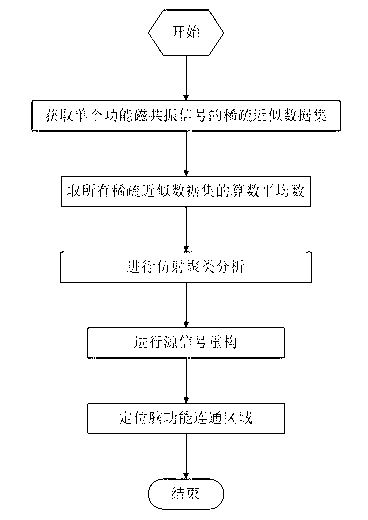Resting brain function connected region detecting method based on affine clustering
A connected area and detection method technology, applied in the field of resting brain functional connected area detection based on affine clustering, can solve problems such as limiting the detection of functional connected areas, and achieve the advantages of shortening execution time, accurate positioning detection, and enhancing detection intensity. Effect
- Summary
- Abstract
- Description
- Claims
- Application Information
AI Technical Summary
Problems solved by technology
Method used
Image
Examples
Embodiment Construction
[0035] The present invention will be further elaborated below by describing a preferred specific embodiment in detail in conjunction with the accompanying drawings.
[0036] like figure 1 As shown, a method for detecting functionally connected regions of the resting brain based on affine clustering, the detection method includes the following steps;
[0037] Step 1, obtaining a sparse approximate data set of a single fMRI signal;
[0038] Step 1.1, perform three-layer one-dimensional wavelet packet decomposition on each time point data of fMRI data, and obtain the corresponding wavelet tree of each time point data, wherein the wavelet base used for wavelet packet decomposition is (Daubechied, abbreviated as db ) family of db2 wavelet bases;
[0039] Step 1.2. Use the distance measure norm based on the normed linear space to measure the sparsity of each wavelet tree node, so as to obtain the sparsity quality vector of each node, so that the sparsity quality vector satisfies t...
PUM
 Login to View More
Login to View More Abstract
Description
Claims
Application Information
 Login to View More
Login to View More - R&D
- Intellectual Property
- Life Sciences
- Materials
- Tech Scout
- Unparalleled Data Quality
- Higher Quality Content
- 60% Fewer Hallucinations
Browse by: Latest US Patents, China's latest patents, Technical Efficacy Thesaurus, Application Domain, Technology Topic, Popular Technical Reports.
© 2025 PatSnap. All rights reserved.Legal|Privacy policy|Modern Slavery Act Transparency Statement|Sitemap|About US| Contact US: help@patsnap.com



